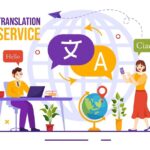In today’s globalized world, mastering more than one language has become both a professional asset and a personal advantage. Educational institutions and training centers are increasingly recognizing the need for innovative tools that support language acquisition. One of the most effective resources that has emerged over the years is the language lab — a dedicated space designed to enhance the process of learning a new language through technology.
What is a Language Lab?
A language lab is a specialized classroom equipped with audio-visual devices and digital tools that help students develop their speaking, listening, reading, and writing skills in a foreign language. Unlike traditional language learning setups, language labs offer interactive and immersive experiences, making language acquisition more engaging and effective.
Originally developed in the mid-20th century, language labs have evolved from analog tape systems to modern digital environments. Today, they feature advanced language lab software, which allows for real-time interaction between students and instructors, self-paced learning, pronunciation practice, and even gamified exercises that reinforce vocabulary and grammar.
Key Features of a Modern Language Lab
Modern language labs go far beyond just playing audio clips or recording speech. They are powered by language lab software that integrates various features designed to support both teachers and learners. Some of the most notable features include:
-
Interactive Lessons: Lessons are delivered through multimedia formats including videos, animations, and real-time exercises.
-
Voice Recording & Analysis: Students can record their speech, compare it to native speakers, and receive feedback on pronunciation and fluency.
-
Live Communication Tools: Instructors can conduct live speaking and listening sessions, hold virtual discussions, and assess student progress instantly.
-
Content Customization: Teachers can upload custom materials, create tests, and design assignments based on class needs.
-
Self-Paced Learning: Students have access to the language lab beyond regular class hours, allowing them to practice and progress at their own pace.
The Role of Language Lab Software
Language lab software serves as the engine that powers the modern language lab. It centralizes all activities, tracks performance, and provides analytical insights into each student’s progress. Many software solutions today are cloud-based, making them accessible from any location and on any device. This flexibility supports hybrid and remote learning models — a critical factor in today’s educational landscape.
Good language lab software also supports a variety of languages and accents, helping learners familiarize themselves with real-world usage and cultural nuances. Additionally, built-in AI tools and speech recognition features can automatically evaluate pronunciation and grammar, giving learners immediate and constructive feedback.
Benefits of Using a Language Lab
-
Improved Speaking Confidence: Frequent exposure to speaking exercises and real-time feedback builds confidence in using the language in real-life settings.
-
Enhanced Listening Skills: Through repeated listening activities, students train their ears to pick up different accents, speeds, and dialects.
-
Personalized Learning: Each student can work on their own strengths and weaknesses, making learning more effective and goal-oriented.
-
Teacher Efficiency: Instructors can manage large groups, monitor individual progress, and provide feedback more efficiently than in traditional settings.
-
Engagement & Motivation: Interactive content, gamified tasks, and real-world simulations make the learning experience more enjoyable and motivating.
Who Can Benefit?
Language labs are not limited to academic institutions. They are equally beneficial for:
-
Corporate training programs, where employees need to learn business English or communicate with international teams.
-
Government agencies that provide training to diplomats, military personnel, or immigration officers.
-
Private language institutes looking to provide a competitive edge in their language training programs.
The Future of Language Labs
With rapid advancements in AI, virtual reality, and mobile technology, the future of the language lab looks promising. Features like virtual reality conversations with avatars, real-time translation tools, and AI-powered tutors are already being tested in advanced settings. As these technologies become more accessible, they will further revolutionize the way languages are taught and learned.
Conclusion
A language lab is no longer just a room with headsets and cassette players; it is a dynamic, tech-enabled environment that empowers both learners and instructors. With the integration of powerful language lab software, these labs are transforming the language learning landscape, making it more interactive, efficient, and effective. As educational needs continue to evolve, the language lab will remain a vital tool for building linguistic skills and breaking down communication barriers across the globe.

